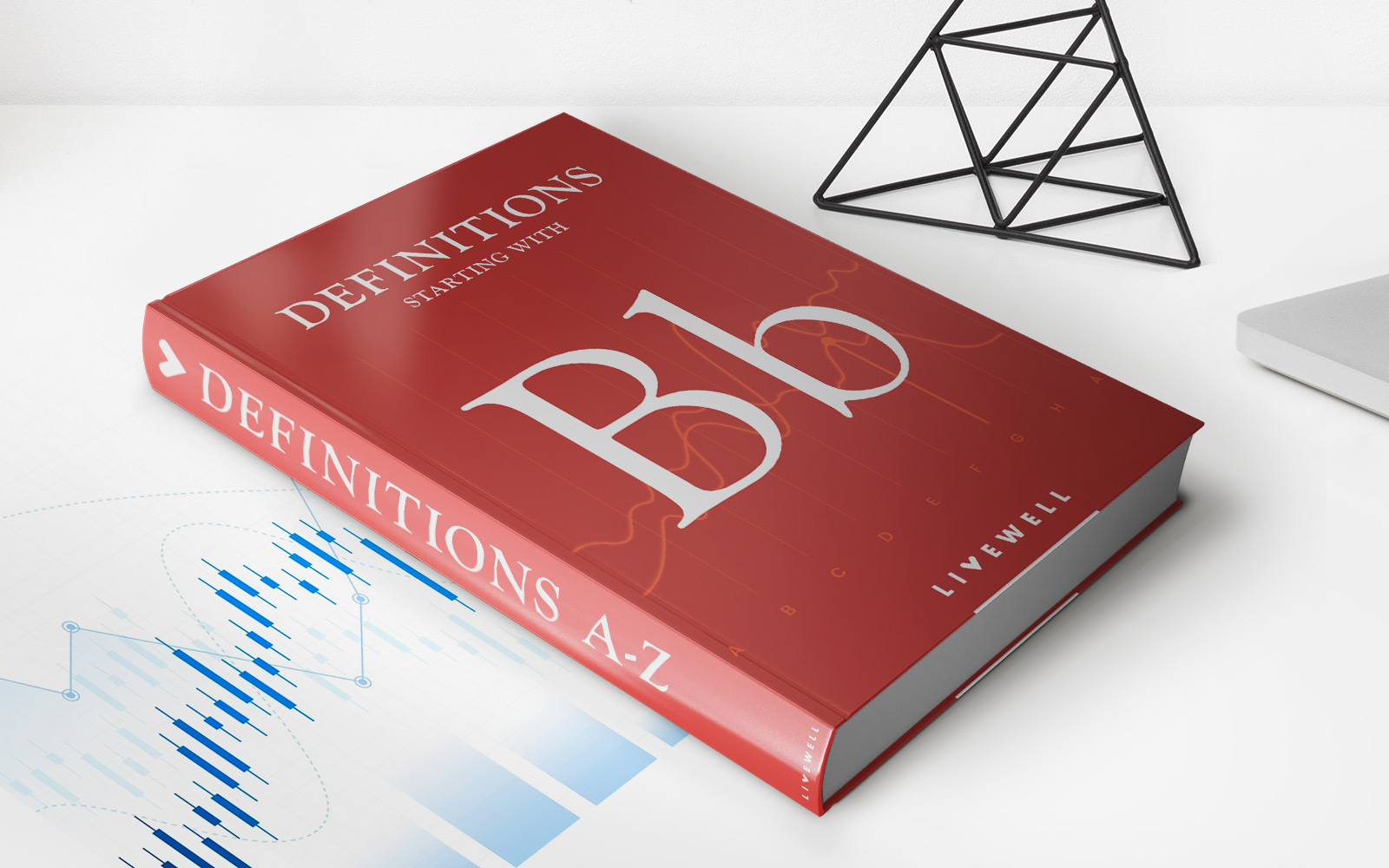

Finance
What Is Mst In Accounting
Published: October 10, 2023
Learn what Mst in accounting means and how it relates to finance. Explore the significance of this term in the financial world.
(Many of the links in this article redirect to a specific reviewed product. Your purchase of these products through affiliate links helps to generate commission for LiveWell, at no extra cost. Learn more)
Table of Contents
- Introduction
- Definition of MST
- Importance of MST in Accounting
- Role of MST in Financial Reporting
- MST for Tax Planning and Compliance
- MST for Cost Management and Control
- Advantages and Disadvantages of Using MST in Accounting
- Practical Applications of MST in Accounting
- Future Trends and Developments in MST
- Conclusion
Introduction
In the world of accounting, accuracy and precision are paramount. Every financial transaction, whether it’s the purchase of inventory or the payment of an employee’s salary, needs to be recorded and categorized correctly. This ensures that the financial statements reflect the true financial position and performance of the company. To achieve this, accounting professionals rely on various tools and methods to organize and analyze financial data.
One such tool that plays a vital role in the field of accounting is the Management Science Theory (MST). MST combines mathematical models, statistical analysis, and optimization techniques to provide valuable insights and solutions to complex financial problems. It helps accountants and financial analysts make informed decisions based on data-driven analysis.
The application of MST in accounting is not a recent development. It has been around for decades, but with advancements in technology and the availability of sophisticated software, its power and effectiveness have significantly increased. Today, companies of all sizes and industries utilize MST to streamline their financial processes, improve cost management, and enhance decision-making.
MST is a multidisciplinary approach that incorporates concepts from mathematics, statistics, economics, and operations research. Its primary objective is to solve complex financial problems by using quantitative models and analytical techniques. By employing MST, accountants can better understand financial trends, assess risks, optimize resource allocation, and make more informed decisions.
Throughout this article, we will explore the different aspects of MST in accounting, including its definition, importance, applications, and future trends. We will delve into how MST helps in financial reporting, tax planning, cost management, and control. Additionally, we will discuss the advantages and disadvantages of using MST in accounting and provide practical examples of its application in real-world scenarios.
So, whether you’re an accounting professional looking to expand your knowledge or a business owner seeking ways to enhance your financial practices, this article will serve as a comprehensive guide to understanding MST in accounting and its relevance in today’s financial landscape.
Definition of MST
Management Science Theory (MST) is a branch of applied mathematics that utilizes mathematical modeling, statistical analysis, and optimization techniques to solve complex financial problems. It is an interdisciplinary field that combines concepts from mathematics, statistics, economics, and operations research to provide a quantitative framework for decision-making in accounting and finance.
MST focuses on the development and application of mathematical models and analytical techniques to analyze and interpret financial data. These models help in understanding the relationships between various financial variables, forecasting future outcomes, and optimizing resource allocation.
At its core, MST provides a systematic approach to problem-solving by using a combination of mathematical formulas, algorithms, and computer programming. It helps accountants and financial professionals make data-driven decisions by quantifying and analyzing the impact of different variables on financial performance.
The goal of MST is to provide insights and solutions to complex financial problems by creating models that capture the underlying dynamics of the situation. These models can be used to optimize business processes, assess risks, and support strategic decision-making.
One of the key aspects of MST is its ability to handle uncertainty and risk. By incorporating probabilistic models and statistical analysis, MST helps accountants and financial professionals assess the potential outcomes and associated risks of different financial scenarios.
Moreover, MST is not limited to a specific industry or organization size. It can be applied in various sectors, including banking, insurance, manufacturing, retail, and service industries. Whether it’s optimizing supply chain management, pricing products, or managing investments, MST provides a framework to analyze and solve financial problems in different contexts.
In summary, MST is a quantitative approach that combines mathematical modeling, statistical analysis, and optimization techniques to provide insights and solutions to complex financial problems. It helps accountants and financial professionals make informed decisions, optimize resource allocation, and assess risk in a systematic and rigorous manner.
Importance of MST in Accounting
Management Science Theory (MST) plays a crucial role in the field of accounting by providing tools and techniques to analyze and interpret financial data. Here are some key reasons why MST is important in accounting:
- Accurate Financial Reporting: MST helps ensure accurate financial reporting by providing quantitative models and analytical techniques to organize, analyze, and interpret financial data. It allows accountants to make informed decisions about the classification and presentation of financial information, ensuring compliance with accounting standards and regulations.
- Optimized Resource Allocation: MST helps in optimizing resource allocation by utilizing mathematical models and optimization techniques. Accountants can use these tools to determine the most efficient allocation of resources, such as capital, labor, and inventory, to maximize profitability and minimize costs.
- Demand Forecasting and Planning: MST enables accountants to forecast future financial trends and demand patterns. By analyzing historical data and utilizing statistical models, accountants can make accurate predictions about future sales, production needs, and resource requirements. This information is important for budgeting, production planning, and inventory management.
- Risk Assessment and Management: MST helps in assessing and managing financial risks by incorporating probabilistic models and statistical analysis. Accountants can analyze the potential impact of various risks, such as market volatility, credit default, and economic fluctuations, and develop strategies to mitigate these risks. This is important for maintaining financial stability and protecting the organization against unforeseen events.
- Cost Management and Control: MST aids in managing and controlling costs by providing models and techniques to analyze cost behavior, identify cost drivers, and measure costs accurately. Accountants can use these tools to implement cost reduction strategies, improve operational efficiency, and make informed decisions regarding pricing and product mix.
- Strategic Decision-Making: MST assists in strategic decision-making by providing a quantitative framework to evaluate different options and scenarios. Accountants can utilize mathematical models, sensitivity analysis, and optimization techniques to assess the financial implications of strategic choices, such as mergers and acquisitions, investment projects, and pricing strategies.
In summary, MST is important in accounting as it enables accurate financial reporting, optimizes resource allocation, facilitates demand forecasting and planning, assesses and manages risks, controls costs, and supports strategic decision-making. By utilizing the tools and techniques of MST, accountants can enhance the financial performance of organizations and contribute to informed decision-making processes.
Role of MST in Financial Reporting
Management Science Theory (MST) plays a significant role in financial reporting by providing valuable tools and techniques to improve the accuracy and reliability of financial statements. Here are some key roles of MST in financial reporting:
- Data Analysis and Interpretation: MST allows accountants to analyze and interpret financial data using quantitative models and statistical analysis. This helps in identifying patterns, trends, and relationships between various financial variables. By applying MST techniques, accountants can ensure that the financial data is accurately classified, summarized, and presented.
- Forecasting and Budgeting: MST provides accountants with the ability to forecast financial trends, estimate future cash flows, and create accurate budgets. By analyzing historical data and utilizing forecasting models, accountants can make informed predictions about future financial performance. This helps in setting realistic financial goals, evaluating performance against budgets, and making necessary adjustments.
- Financial Statement Analysis: MST enables accountants to perform in-depth analysis of financial statements. By utilizing ratio analysis, trend analysis, and benchmarking techniques, accountants can assess the financial health and performance of an organization. This analysis helps in identifying strengths, weaknesses, and areas that require improvement, enabling informed decision-making by stakeholders.
- Compliance with Accounting Standards: MST helps in ensuring compliance with accounting standards and regulations. Accountants can use MST techniques to correctly apply accounting principles, classify transactions, and measure key financial elements such as revenue recognition and asset valuation. This leads to the production of accurate and reliable financial statements that adhere to the required standards and guidelines.
- Risk Assessment and Disclosure: MST assists accountants in assessing and disclosing financial risks. By utilizing risk models and sensitivity analysis, accountants can identify potential risks that may impact the financial statements. This information allows them to provide appropriate disclosures in the financial statements, ensuring transparency and allowing stakeholders to make informed decisions.
- Internal Controls and Fraud Detection: MST plays a role in implementing internal controls and detecting fraudulent activities. Accountants can utilize MST techniques to design control systems, monitor transactions, and identify irregularities in financial data. This helps in safeguarding the integrity of financial information and preventing fraudulent practices.
In summary, MST plays a crucial role in financial reporting by enabling data analysis and interpretation, facilitating forecasting and budgeting, conducting financial statement analysis, ensuring compliance with accounting standards, assessing and disclosing risks, and enhancing internal controls and fraud detection. By leveraging the power of MST, accountants can improve the accuracy, reliability, and transparency of financial reporting, providing stakeholders with meaningful and reliable information for decision-making.
MST for Tax Planning and Compliance
Management Science Theory (MST) plays a crucial role in tax planning and compliance for businesses. By utilizing quantitative models and analytical techniques, MST helps accountants and tax professionals optimize tax strategies, ensure compliance with tax regulations, and minimize tax liabilities. Here are some key aspects of using MST for tax planning and compliance:
- Optimizing Tax Strategies: MST allows accountants to analyze different tax scenarios and evaluate the tax implications of various decisions. By utilizing mathematical models and optimization techniques, accountants can identify tax-saving opportunities and develop strategies to minimize tax liabilities while maximizing after-tax profits. This includes decisions such as structuring business operations, asset acquisitions, and utilizing tax credits and deductions.
- Forecasting Tax Obligations: MST enables accountants to forecast and estimate future tax obligations accurately. By analyzing historical tax data, utilizing statistical modeling, and considering potential changes in tax laws, accountants can make reliable predictions about future tax liabilities. This helps in budgeting, cash flow planning, and ensuring sufficient funds are set aside for tax payments.
- Managing Transfer Pricing: MST helps in managing transfer pricing, which involves determining the prices of goods, services, and intellectual property transferred between related entities within a multinational enterprise. By employing MST techniques, accountants can develop appropriate transfer pricing methodologies that align with tax regulations and avoid disputes with tax authorities.
- Ensuring Regulatory Compliance: MST aids in ensuring compliance with tax regulations and laws. By applying quantitative models, accountants can assess the impact of tax regulations on various transactions and operations. This includes compliance with tax reporting requirements, documentation, and disclosure obligations. MST helps in identifying potential risks and ensuring that businesses operate in accordance with applicable tax laws.
- Minimizing Tax Risks: MST helps in identifying and mitigating tax risks. By utilizing risk assessment models and conducting tax risk analysis, accountants can identify potential tax issues and implement appropriate controls to prevent non-compliance or exposure to penalties. This includes evaluating tax positions, assessing the impact of uncertain tax positions, and implementing strategies to minimize tax disputes and potential litigation.
- Utilizing Tax Technology Solutions: MST leverages tax technology solutions to streamline tax compliance processes. By utilizing software tools, data analytics, and automation, accountants can improve the accuracy and efficiency of tax calculations, filings, and reporting. This helps in reducing errors, increasing compliance, and saving time and resources.
In summary, MST is a valuable tool for tax planning and compliance. It helps accountants optimize tax strategies, forecast tax obligations, manage transfer pricing, ensure regulatory compliance, minimize tax risks, and utilize tax technology solutions. By leveraging the power of MST, businesses can effectively navigate the complexities of the tax landscape, minimize tax liabilities, and maintain compliance with tax laws and regulations.
MST for Cost Management and Control
Management Science Theory (MST) is a powerful tool that can be utilized for cost management and control within organizations. By employing quantitative models and analytical techniques, MST helps accountants and managers optimize cost structures, analyze cost behavior, and implement effective cost control strategies. Here are some key aspects of using MST for cost management and control:
- Cost Analysis: MST enables accountants to analyze and understand various elements of costs within an organization. By utilizing mathematical models and statistical analysis, accountants can identify cost drivers, determine cost behavior, and assess the impact of different factors on costs. This analysis helps in identifying cost-saving opportunities and optimizing resource allocation.
- Budgeting and Variance Analysis: MST aids in budgeting and variance analysis by providing quantitative tools to compare actual costs against budgeted costs. By utilizing variance analysis techniques, accountants can identify and analyze the reasons for deviations from the budgeted costs. This information helps in monitoring and controlling costs, making necessary adjustments, and improving future budgeting processes.
- Activity-Based Costing (ABC): MST facilitates the implementation of Activity-Based Costing, a method that assigns costs based on the activities that consume resources. By utilizing mathematical models and cost allocation techniques, accountants can accurately allocate costs to specific activities and products. This helps in understanding the true cost of each activity and identifying opportunities for cost reduction and process improvement.
- Cost-Volume-Profit (CVP) Analysis: MST helps in conducting Cost-Volume-Profit analysis, which assesses the relationship between costs, volumes, and profits. By utilizing quantitative models and sensitivity analysis, accountants can determine breakeven points, evaluate the impact of different volumes on profitability, and make informed decisions about pricing, production levels, and product mix optimization.
- Variance Analysis: MST aids in conducting variance analysis, which compares actual costs against standard costs. By utilizing mathematical models and statistical techniques, accountants can identify the reasons for cost variances and analyze the efficiency and effectiveness of cost control measures. This analysis helps in detecting inefficiencies, implementing corrective actions, and improving cost management practices.
- Cost Optimization: MST assists in optimizing cost structures by utilizing mathematical models and optimization techniques. Accountants can analyze different cost scenarios, evaluate the trade-offs, and identify the most cost-effective alternatives. This helps in making informed decisions about procurement, production processes, outsourcing, and other cost-related activities.
In summary, MST is invaluable for cost management and control within organizations. It enables accountants to conduct cost analysis, budgeting, variance analysis, activity-based costing, CVP analysis, and cost optimization. By utilizing the power of MST, organizations can achieve better cost control, identify cost-saving opportunities, optimize resource allocation, and enhance overall profitability.
Advantages and Disadvantages of Using MST in Accounting
Management Science Theory (MST) offers several advantages when applied in the field of accounting. However, it is essential to consider its limitations as well. Here are the advantages and disadvantages of using MST in accounting:
- Advantages:
- Data-Driven Decision Making: MST provides a data-driven approach to accounting decisions. By utilizing quantitative models and analytical techniques, accountants can make informed decisions based on objective analysis of financial data.
- Accuracy and Precision: MST helps in improving the accuracy and precision of financial reporting and analysis. By relying on mathematical models and statistical analysis, accountants can minimize errors and biases, resulting in more reliable financial information.
- Efficient Resource Allocation: MST enables efficient resource allocation by optimizing the allocation of capital, labor, and other resources. This leads to improved cost management, operational efficiency, and profitability.
- Risk Assessment and Mitigation: MST aids in assessing and mitigating financial risks. By employing risk models and sensitivity analysis, accountants can identify potential risks and develop strategies to mitigate their impact on the organization’s financial performance.
- Strategic Decision Making: MST assists in strategic decision-making by providing a quantitative framework for evaluating different options and scenarios. Accountants can utilize mathematical models and optimization techniques to assess the financial implications of strategic choices and make more informed decisions.
- Improved Cost Control: MST helps in implementing effective cost control measures. By analyzing cost behavior and utilizing variance analysis, accountants can identify cost-saving opportunities, monitor cost deviations, and implement corrective actions.
- Disadvantages:
- Complexity: MST can be complex, requiring a strong understanding of mathematical modeling and statistical analysis. Implementation of MST techniques may require specialized training and expertise.
- Data Limitations: MST heavily relies on accurate and reliable data. If the data used for analysis is incomplete, inaccurate, or outdated, it may lead to misleading results and flawed decision-making.
- Assumptions and Simplifications: MST models often involve assumptions and simplifications about the underlying financial processes. These assumptions may not always reflect the complex realities of the business environment, leading to potential limitations in the accuracy of the analysis.
- Resource Requirements: Implementing MST techniques may require significant investment in terms of resources, including specialized software, computational power, and data infrastructure. Small or resource-constrained organizations may find it challenging to adopt and implement MST effectively.
- Interpretation Challenges: MST outcomes and analysis can be subject to different interpretations. Different accountants or stakeholders may interpret the results differently, leading to potential inconsistencies in decision-making.
While MST provides numerous advantages in accounting, it is important to consider the associated challenges and limitations. By understanding both the advantages and disadvantages, organizations can effectively leverage the power of MST while being mindful of its limitations.
Practical Applications of MST in Accounting
Management Science Theory (MST) has numerous practical applications in the field of accounting. By utilizing quantitative models and analytical techniques, MST helps accountants improve financial analysis, optimize resource allocation, and make informed decisions. Here are some practical applications of MST in accounting:
- Financial Forecasting: MST enables accountants to forecast financial trends, estimate future cash flows, and create accurate financial projections. By analyzing historical data and utilizing time series analysis and regression models, accountants can make reliable predictions about future financial performance.
- Strategic Planning: MST aids in strategic decision-making by providing a quantitative framework for evaluating different options and scenarios. Accountants can utilize mathematical models, such as cost-volume-profit analysis and sensitivity analysis, to assess the financial implications of strategic choices such as product pricing, capital investments, and market expansion.
- Cost Management and Control: MST helps in managing and controlling costs by analyzing cost behavior, identifying cost drivers, and implementing cost control strategies. Accountants can utilize activity-based costing, variance analysis, and optimization techniques to optimize resource allocation, identify cost-saving opportunities, and improve operational efficiency.
- Risk Assessment and Management: MST assists accountants in assessing and managing financial risks. By utilizing risk models, sensitivity analysis, and scenario analysis, accountants can identify potential risks, evaluate their impact on financial performance, and develop strategies to mitigate those risks. This helps in protecting the organization against unforeseen events.
- Performance Measurement and Evaluation: MST helps in measuring and evaluating the financial performance of an organization. Accountants can employ ratio analysis, trend analysis, and benchmarking techniques to assess profitability, liquidity, efficiency, and other key financial indicators. This information aids in identifying areas for improvement and making informed decisions to enhance overall performance.
- Decision Analysis: MST provides a quantitative framework for decision analysis. Accountants can utilize decision tree analysis, sensitivity analysis, and optimization models to evaluate different options and scenarios. This helps in making informed decisions about investment projects, product mix optimization, pricing strategies, and resource allocation.
- Tax Planning and Compliance: MST aids in tax planning and compliance by optimizing tax strategies, forecasting tax obligations, and ensuring compliance with tax regulations. Accountants can utilize mathematical models and optimization techniques to analyze the tax implications of various decisions and minimize tax liabilities while adhering to tax laws.
In summary, MST has practical applications in various aspects of accounting, including financial forecasting, strategic planning, cost management and control, risk assessment and management, performance measurement and evaluation, decision analysis, and tax planning and compliance. By leveraging the power of MST, accountants can improve financial analysis, optimize resource allocation, and make informed decisions that contribute to the financial success of the organization.
Future Trends and Developments in MST
The field of Management Science Theory (MST) is continuously evolving, driven by advancements in technology, data analytics, and the increasing complexity of the business environment. Here are some future trends and developments to look out for in the field of MST:
- Integration of Artificial Intelligence (AI) and Machine Learning (ML): The integration of AI and ML into MST is expected to revolutionize the field. By leveraging the power of these technologies, accountants can automate data analysis, improve forecasting accuracy, and enhance decision-making processes. AI and ML algorithms can identify patterns and trends in massive datasets and provide real-time insights for better financial management.
- Big Data Analytics: As the volume, variety, and velocity of data continue to grow, Big Data analytics will play a crucial role in MST. Accountants will need the skills to collect, analyze, and interpret large datasets to derive meaningful insights and optimize financial operations. The ability to effectively utilize Big Data analytics can lead to improved forecasting, enhanced risk assessment, and better strategic decision-making.
- Cloud Computing: Cloud-based solutions are becoming increasingly prevalent in the field of accounting, and MST is no exception. Cloud computing enables accountants to access and analyze data from anywhere, collaborate in real-time, and utilize sophisticated modeling and optimization tools. The use of cloud-based MST solutions allows for cost-effective scalability, flexibility, and improved data security.
- Advanced Visualization Techniques: Visual representation of data will become more prevalent in MST. Accountants will leverage interactive dashboards, data visualization tools, and virtual reality technologies to present financial information in a more intuitive and engaging manner. These techniques enhance the understanding of complex financial data and facilitate data-driven decision-making.
- Ethics and Risk Management: With the increasing focus on ethical practices and risk management, MST will place greater emphasis on incorporating ethical considerations and risk assessment frameworks into decision-making models. Accountants will need to analyze the financial impact of ethical decisions, evaluate risk exposure, and ensure compliance with ethical and regulatory standards.
- Cybersecurity and Data Privacy: As technology advances, protecting financial data and ensuring data privacy will be of paramount importance in MST. Accountants will need to stay updated with cybersecurity measures, implement robust data protection strategies, and understand the legal and compliance implications of handling sensitive financial information.
- Integration with Sustainability and ESG: As sustainable practices gain prominence, MST will integrate environmental, social, and governance (ESG) factors into decision-making models. Accountants will need to assess the financial impact of sustainability initiatives, evaluate ESG risks, and incorporate sustainability metrics into financial analysis. This integration will help organizations make more informed and sustainable financial decisions.
In summary, the future of MST is expected to be characterized by the integration of AI and ML, the utilization of Big Data analytics, the adoption of cloud computing, advances in data visualization techniques, a focus on ethics and risk management, cybersecurity and data privacy considerations, and the integration of sustainability and ESG factors. By embracing these trends and developments, accountants can leverage MST to enhance financial analysis, optimize decision-making, and navigate the evolving business landscape.
Conclusion
Management Science Theory (MST) plays a significant role in the field of accounting, providing accountants and financial professionals with valuable tools and techniques to improve decision-making, optimize resource allocation, and enhance financial performance. By utilizing quantitative models, mathematical formulas, and analytical techniques, MST helps accountants make data-driven decisions based on rigorous analysis of financial data.
In this article, we explored the various aspects of MST in accounting, starting with its definition and importance. We discussed how MST is used for financial reporting, tax planning and compliance, cost management and control, and other practical applications within the field of accounting. We also examined the advantages and disadvantages of using MST, highlighting its benefits and potential limitations.
Looking to the future, we discussed emerging trends and developments in MST, such as the integration of AI and ML, the utilization of Big Data analytics, the adoption of cloud computing, and the integration of sustainability and ESG factors. These trends represent the evolving nature of the field and offer opportunities for accountants to leverage technology and data-driven insights for better financial management.
In conclusion, MST is a powerful tool that helps accountants navigate the complexities of today’s financial landscape. By incorporating quantitative models, statistical analysis, and optimization techniques, accountants can enhance financial reporting accuracy, optimize resource allocation, mitigate risks, and make informed decisions that contribute to the overall success of the organization. The future of MST holds immense potential with advancements in technology and data analytics, enabling accountants to continue leveraging the power of data-driven analysis to drive financial excellence.














